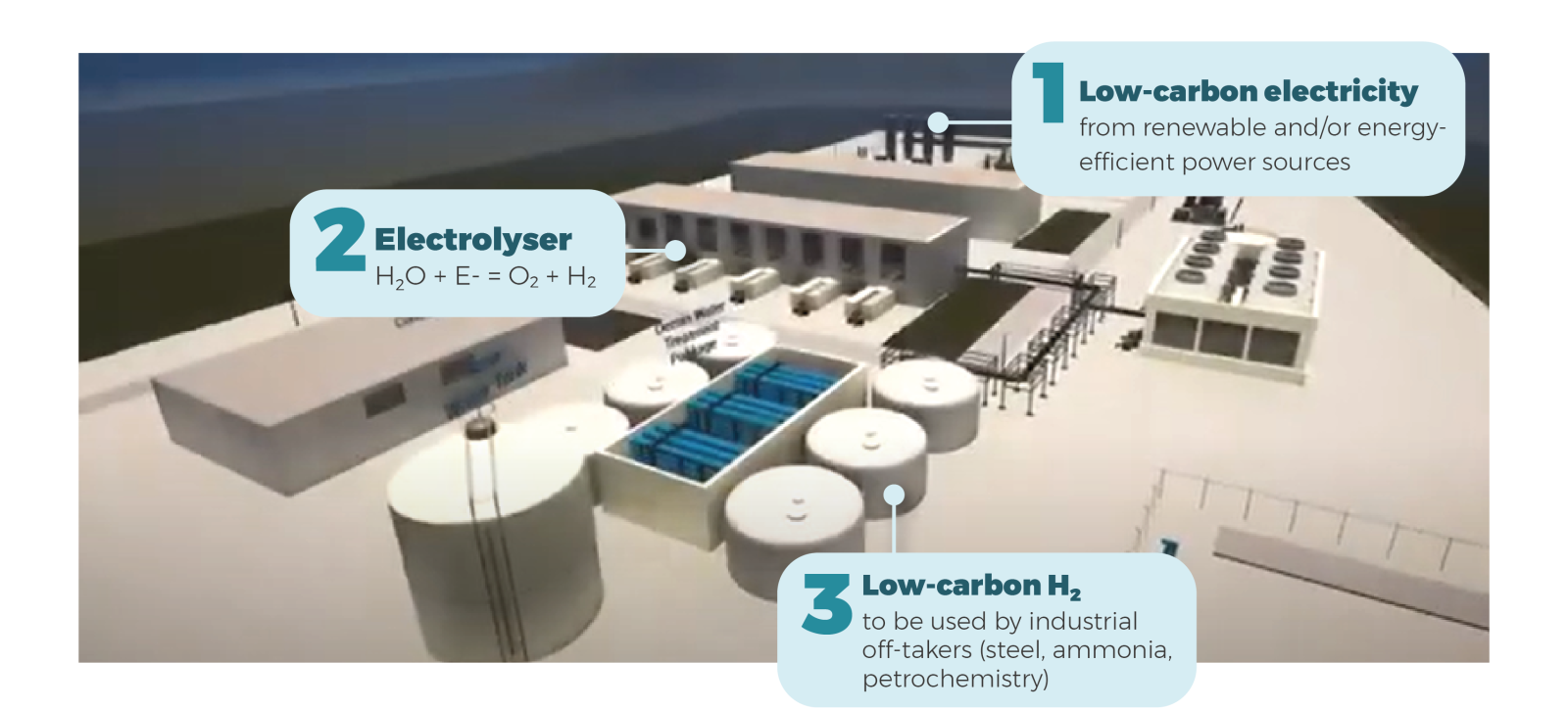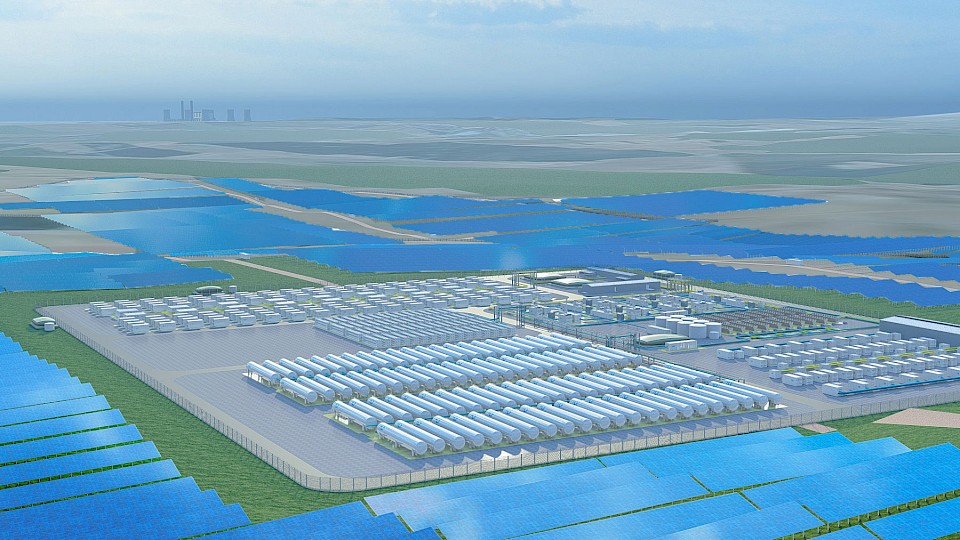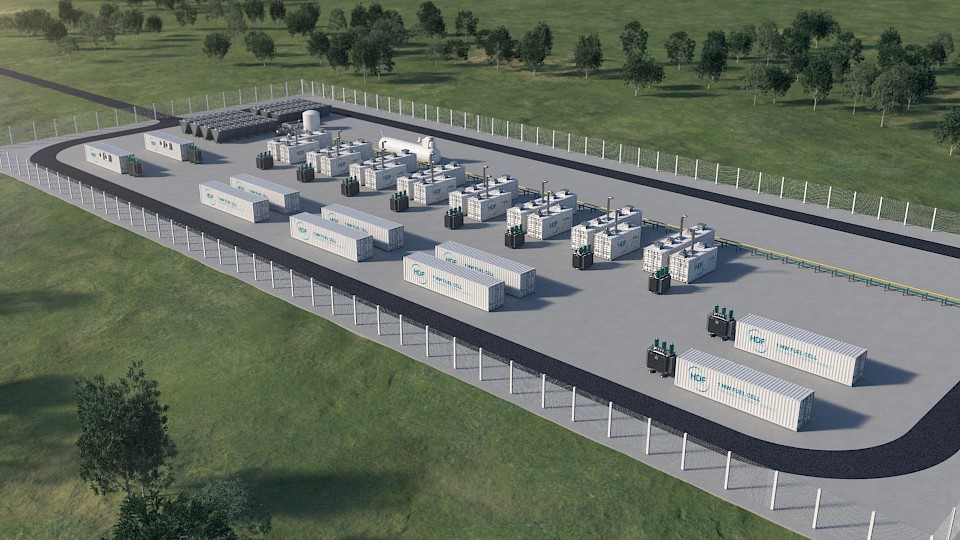Hydrogen infrastructure
As an H2 infrastructure architect, HDF Energy designs and develops large-scale turnkey hydrogen infrastructure geared towards the generation of sustainable clean electricity or the production of eco-friendly low-carbon hydrogen.
As an integrated player present at every stage of the life cycle, we also take charge of each project’s financing, construction, and operation through the creation of a dedicated Special Purpose Vehicle (SPV) entity.
Renewstable hydrogen power plant
Non-intermittent renewable energy supply, day and night
In many parts of the world, weak or isolated electric grids struggle to meet high energy demands, relying on polluting fossil fuels. While wind and solar offer carbon-free and cost-effective benefits, their intermittency causes grid instability when overused.
Network operators seek a stable power supply, while local governments and end-users aspire to access clean, locally sourced electricity, without emitting any pollutants or fine particles. Addressing these critical needs is HDF Energy's groundbreaking solution: the Renewstable® power plant.
These multi-MW facilities competently integrate intermittent renewable energy sources with substantial on-site energy storage in the form of green hydrogen. This innovative approach ensures the continuous generation of green, baseload power 24/7, or peak shaving while guaranteeing optimal capacity.
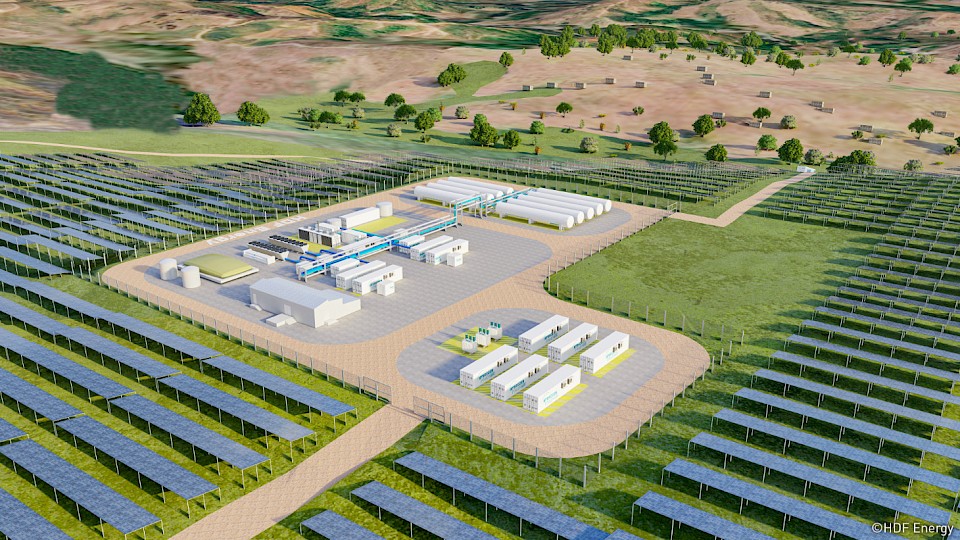
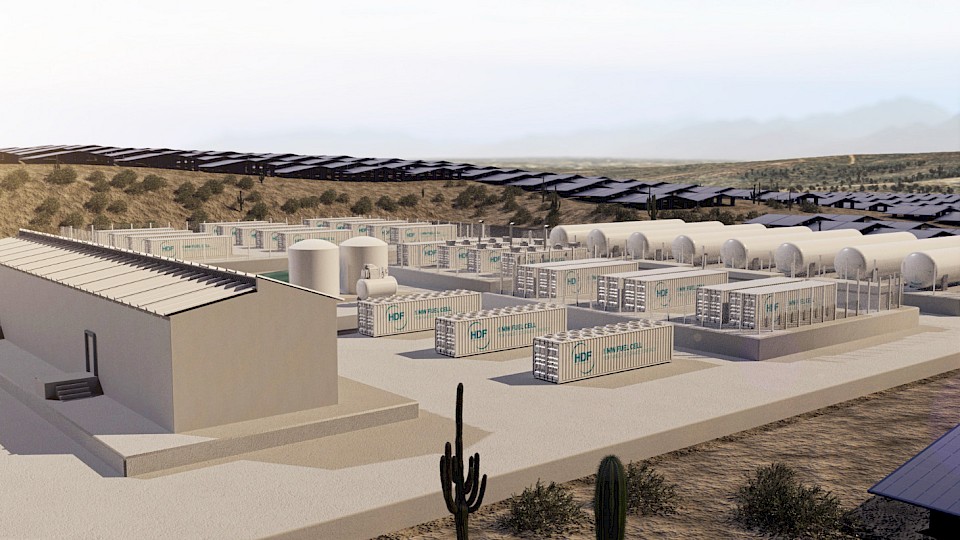
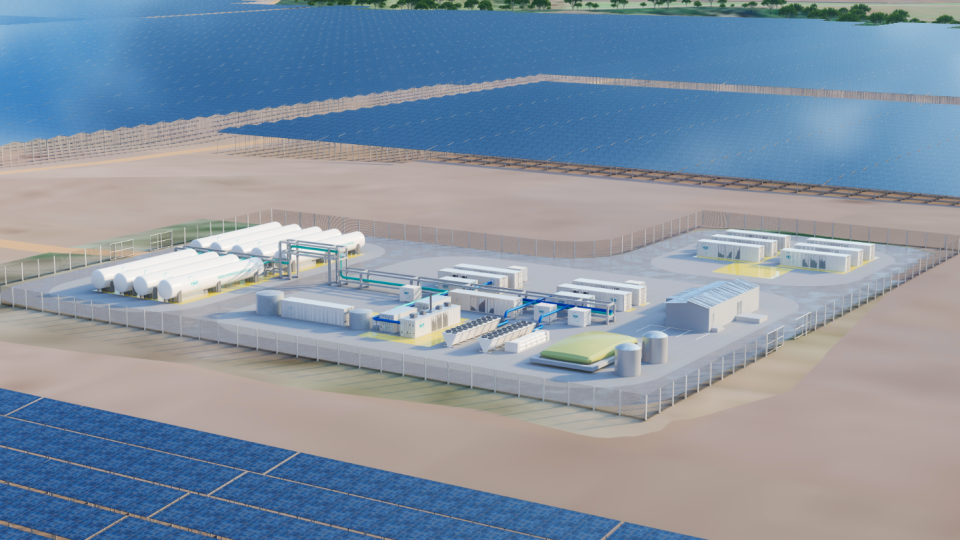
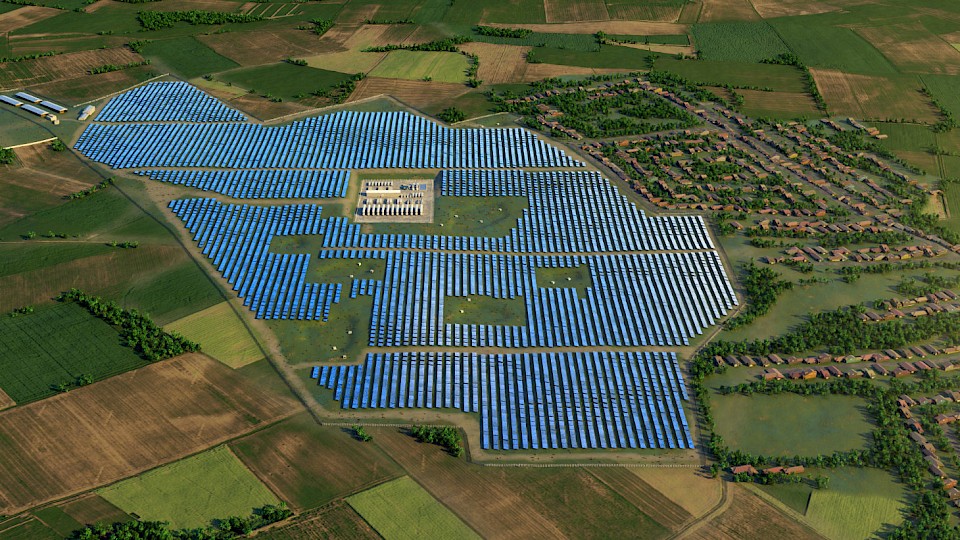
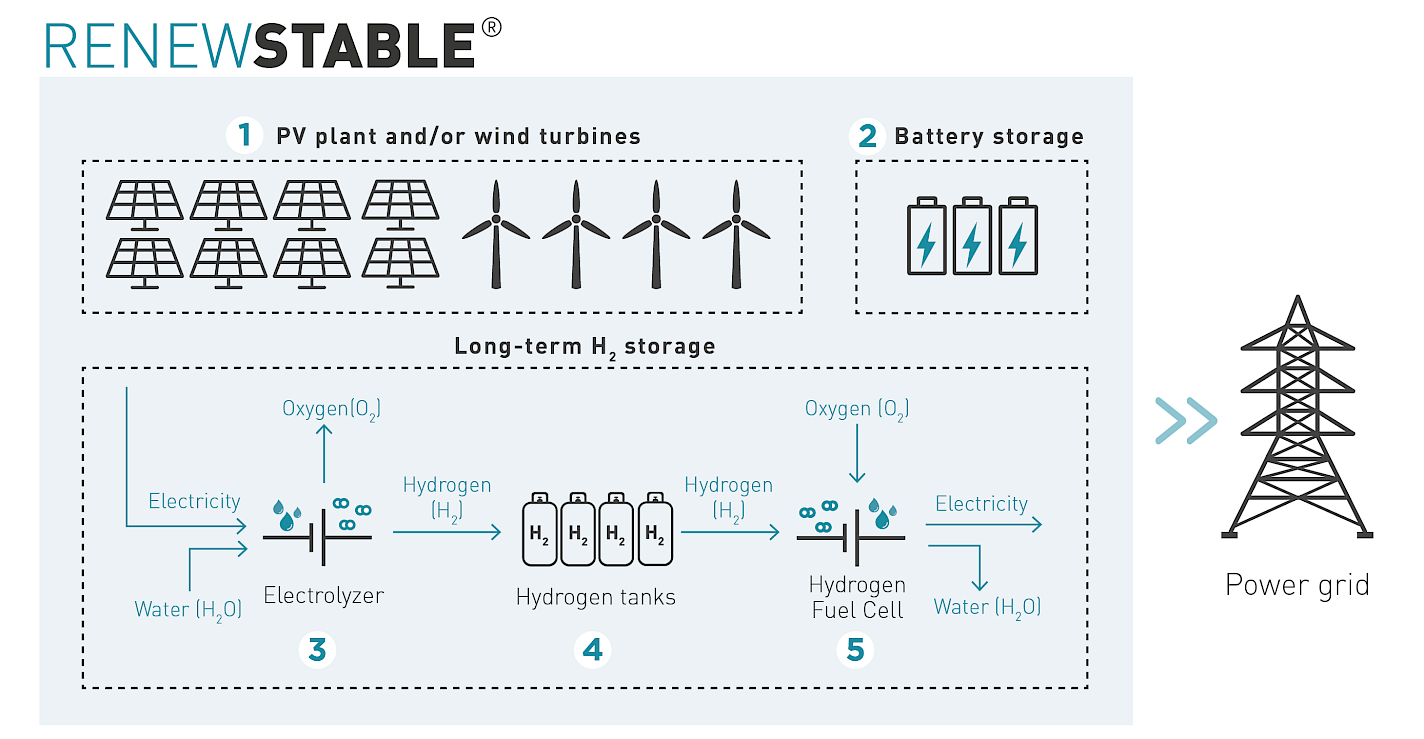
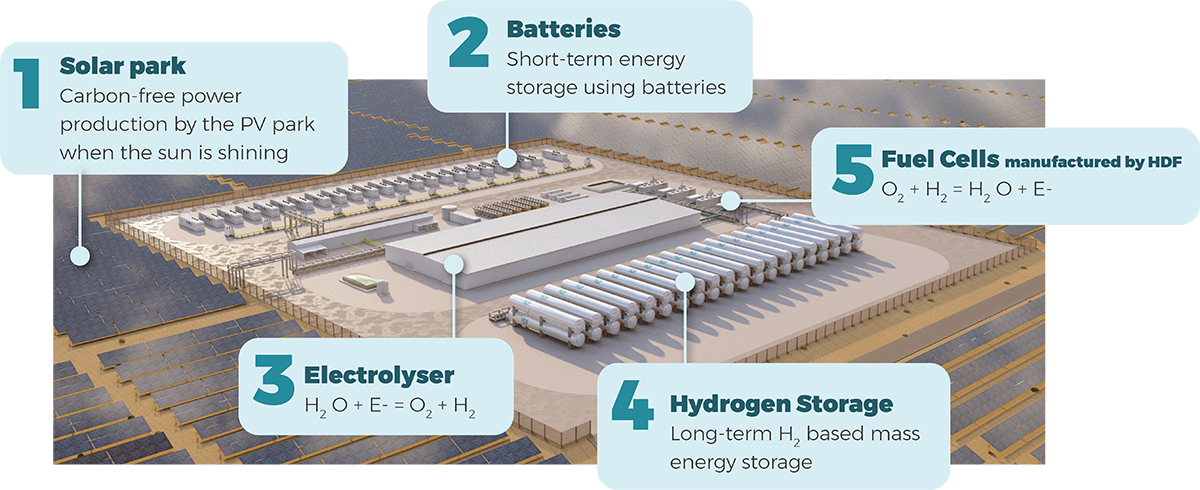
- The solar park and/or wind turbines produce non-polluting electricity when the sun is shining and/or when the wind is blowing. One part of this energy is injected directly into the power grid, while another part is stored in batteries and in the form of hydrogen.
- Battery storage enables energy to be restored to maintain the power plant's production over a short period of time, for example when a cloud passes overhead.
- Hydrogen is produced from water via an electrolyser (water electrolysis).
- The produced hydrogen is stored as a gas in large tanks.
- Electricity is generated from the stored hydrogen using high-power fuel cells, developed and manufactured by HDF Energy. It is injected in the power grid when the sun isn’t shining or the wind isn’t blowing over the long term (long cloud cover, night, long periods without wind).
This integration is made possible through HDF's advanced energy management system, which orchestrates when to charge or discharge the batteries and when to generate or consume hydrogen. The result is an uninterrupted supply of cost competitive green electricity available 24/7, guaranteeing optimal capacity, perfectly tailored to meet grid requirements and saving thousands of tons of CO2 annually.
Other infrastructure models
HyPower “Hydrogen to Power” infrastructure:
on-demand 24/7 production of low-carbon power
Our HyPower infrastructures are multi-MW fuel cell power plants harnessing the potential of low-carbon or green hydrogen, sourced from hydrogen transportation networks or by-product hydrogen produced by key industries, to generate clean electricity.
HyPower presents an eco-conscious solution, poised to revolutionize power generation by reducing our reliance on fossil fuels. Our clientele includes electrical utilities, industries seeking to decarbonize their electrical supply, and harbors looking to enhance their port infrastructure and shore power capabilities.
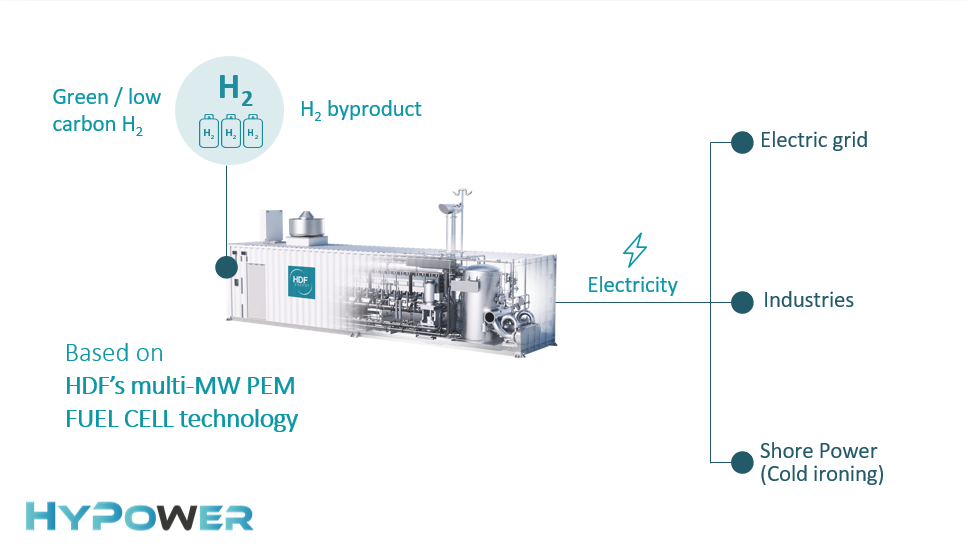
The deployment of HyPower is currently underway in a conducive European environment. Indeed, the "European Hydrogen Backbone" initiative was launched in 2020 by prominent European gas transmission operators (TSOG). This visionary project is dedicated to establishing an extensive network of hydrogen transport pipelines throughout Europe. It involves retrofitting underutilized natural gas pipelines and creating new sections to interconnect these revamped networks. Ultimately, this initiative will connect regions with substantial green or low-carbon hydrogen production to major consumer hubs across Europe.
The expansion of these hydrogen pipelines offers HDF Energy a unique opportunity. Our high-powered fuel cells, manufactured by HDF, can seamlessly integrate with this burgeoning network. HDF then positions itself as a buyer of this hydrogen to produce clean electricity on demand. We are actively collaborating with key stakeholders in the Hydrogen Backbone initiative to strategically position HyPower plants where they are needed most.
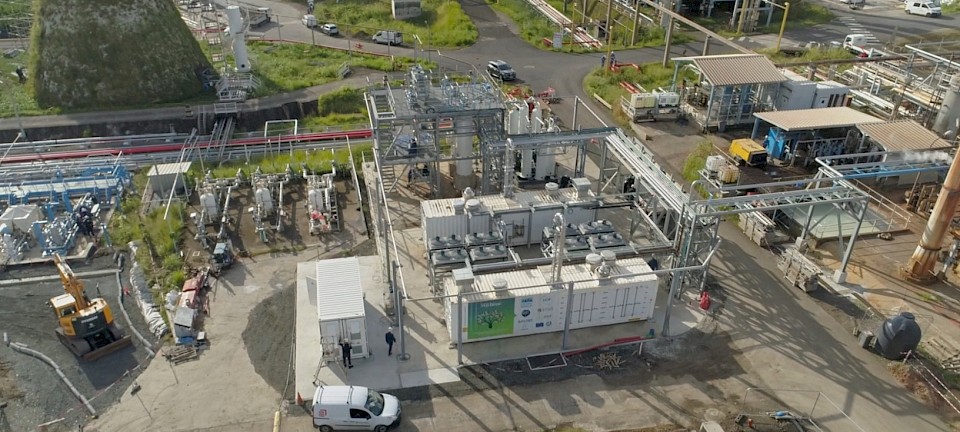
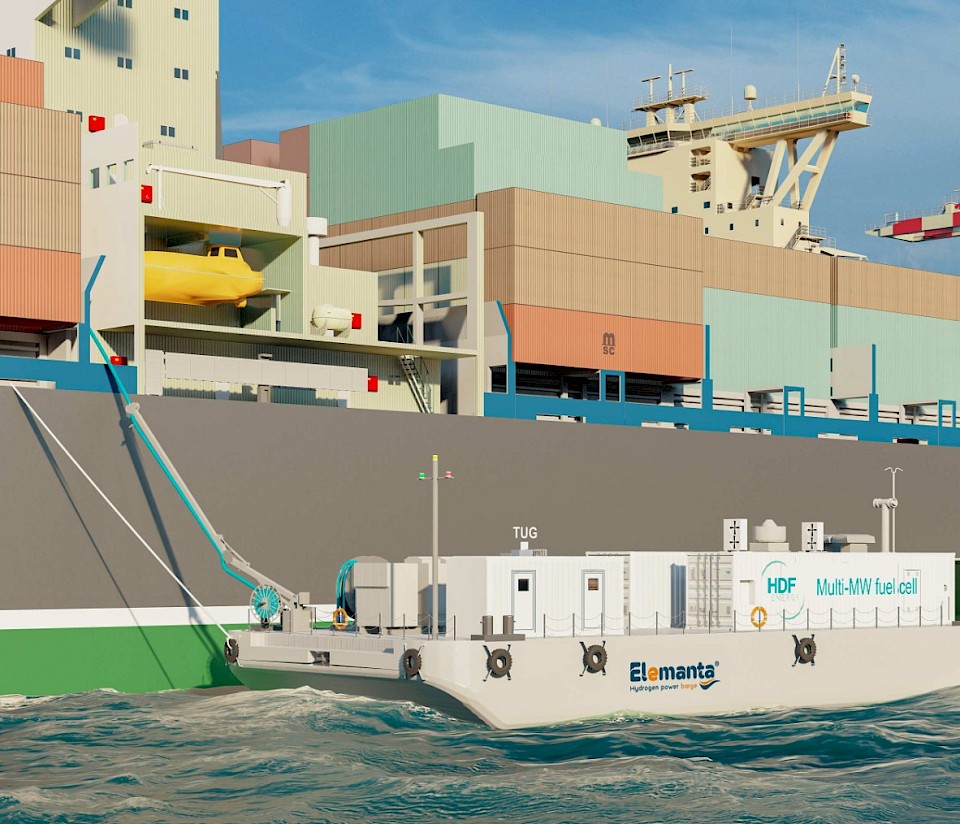
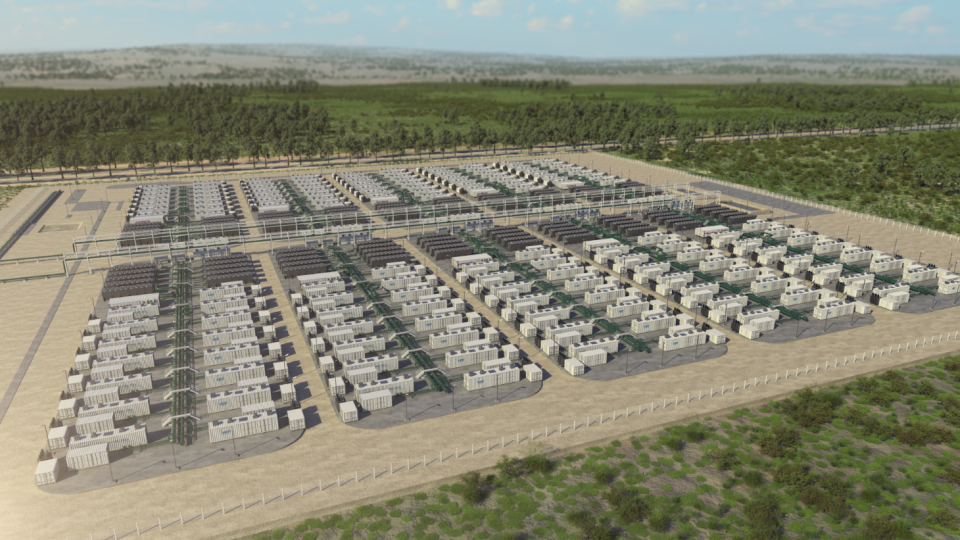
Green or low-carbon hydrogen production to decarbonize the industries
HDF Energy also develops green or low-carbon hydrogen production infrastructure projects tailored for industrial applications. This infrastructure harnesses the power of electrolysis, a process that extracts hydrogen from water, coupled with green and low-carbon electricity generated by renewable and energy-efficient power sources. The resultant low-carbon hydrogen serves as a pivotal raw material for various industrial sectors, including oil refining, ammonia production, and steel manufacturing, among others.
This eco-friendly solution empowers these industries to make substantial reductions in their carbon footprint and their fine particle emissions, thereby contributing significantly to the global effort to combat climate change.
